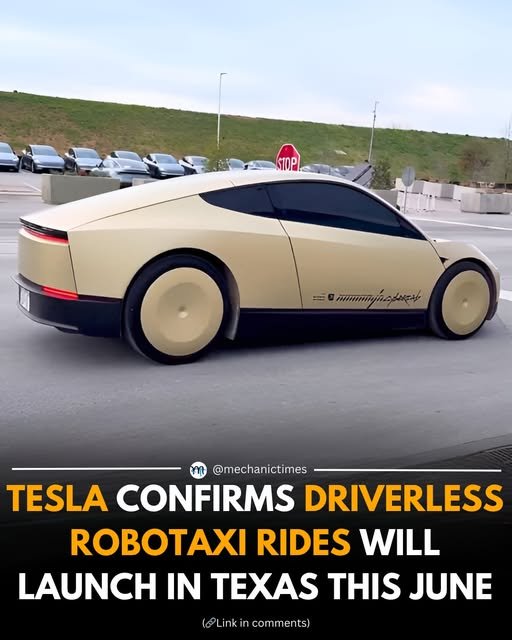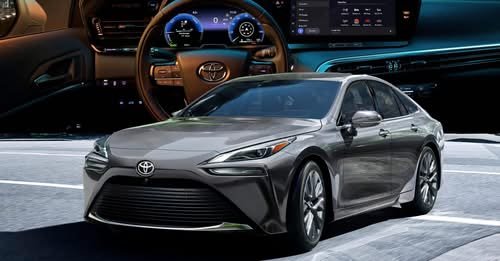Tesla just confirmed what has long been teased, speculated, and debated: Driverless Robotaxi rides are coming to Texas this June.
In what could be the most significant leap in Tesla’s autonomous driving ambitions to date, the company announced that it will begin offering fully driverless rides using its Robotaxi fleet, starting in select Texas cities. This rollout marks the first public launch of a fully autonomous Tesla service, and it could change not only how we move, but how we think about transportation itself.
Let’s break down what this means, what’s coming, and whether the world—and Tesla—is truly ready.
What Is Tesla’s Robotaxi?
Tesla’s Robotaxi is a fully autonomous electric vehicle designed to function without a steering wheel, pedals, or human driver. Unlike Tesla’s current fleet of consumer cars with “Full Self-Driving” (FSD) capability that still require driver supervision, Robotaxis are intended to be 100% self-driving under all conditions.
According to Tesla:
- The vehicle is custom-designed from the ground up for autonomy
- It includes no manual controls at all
- Will rely entirely on Tesla’s vision-based AI system (not LIDAR or HD maps)
- Rides will be hailed via the Tesla app, much like Uber or Lyft
Tesla’s Robotaxi fleet is expected to operate in designated service areas during the initial rollout phase.
Where in Texas Is It Launching?
Tesla has not publicly disclosed all launch locations, but early reports and permit filings suggest the rollout will begin in:
- Austin – Tesla’s Gigafactory headquarters city
- Houston – Texas’ largest metro, with supportive infrastructure
- Possibly Dallas–Fort Worth, pending regulatory approval
Texas was a natural choice for this testbed due to:
- Favorable state laws for AV testing
- Tesla’s strong operational presence
- An already-growing tech-forward transportation culture
How Will It Work?
Riders will be able to:
- Open the Tesla app
- Select the Robotaxi option
- Be picked up and dropped off without a driver present
Early access will likely go to Tesla employees, FSD beta testers, or Tesla owners, followed by the general public once safety and performance benchmarks are met.
Tesla has said the service will:
- Operate in geo-fenced zones at first
- Monitor all vehicles via real-time fleet telemetry
- Be equipped with redundant safety systems and remote intervention capabilities
What Technology Powers It?
Tesla’s Robotaxi relies on:
- FSD v12, the latest software iteration using an end-to-end neural network
- Pure computer vision (no LIDAR)—a controversial but intentional choice by Musk
- Dojo supercomputer training—Tesla’s proprietary AI training engine
- Hardware features like:
- Ultrasonic sensors
- HD cameras (360° vision)
- GPU-accelerated onboard computers
- Redundant braking and steering actuators
Tesla’s approach is unique because it:
- Trains the car like a human, using real-world footage instead of labeled map data
- Relies heavily on fleet learning, where data from millions of Tesla miles improves each Robotaxi’s behavior
- Avoids reliance on expensive third-party sensors
How Does This Compare to Competitors?
Tesla isn’t the first company to launch a robotaxi service, but it may be the most ambitious.
Waymo (Alphabet/Google)
- Uses LIDAR, radar, and high-definition maps
- Already operating in Phoenix, San Francisco, and Los Angeles
- Very cautious, rule-based, and geofenced
Cruise (General Motors)
- Operates in several U.S. cities with full autonomy
- Uses hybrid sensor stacks and mapping
- Suffered setbacks after accidents and regulatory scrutiny
Tesla
- No HD maps, no LIDAR, no radar
- Relies on vision + neural networks
- Claims it can generalize to new environments faster than competitors
In short: Waymo and Cruise use a controlled, heavily engineered approach. Tesla is betting on AI to “figure it out.”
Why Texas? Strategic Reasons Behind the Launch Site
Tesla’s decision to launch in Texas isn’t just about geography—it’s strategic:
- Austin is home to Giga Texas, the production site of many new Tesla models, including the Cybertruck
- Texas laws favor AV testing, with few regulatory roadblocks
- Warm weather and wide roads provide ideal conditions for AI learning
- Tesla is aiming to show the world that it can scale autonomy in a real, American city—not just Silicon Valley test zones
Launching in Texas also sends a clear signal that Tesla wants scale, not sandbox pilots.
What Will the Robotaxi Look Like?
Though Tesla hasn’t officially unveiled the production model, leaks and renders suggest:
- A futuristic, minimalist exterior
- No visible steering wheel or dashboard
- Roomy seating, possibly in a lounge configuration
- Sliding doors for curbside access
- Extensive display panels for passengers
Musk has hinted at a “Cybertruck-like design language” for the Robotaxi—a bold, edgy, stainless-steel aesthetic.
An official reveal event is expected later in Q2, before the June launch.
Pricing and Monetization: How Much Will a Ride Cost?
Tesla’s strategy includes:
- Lowering cost-per-mile below traditional rideshare services
- Eventually offering Robotaxi rides at $0.25–$0.50 per mile, far cheaper than Uber or Lyft
- Leveraging energy efficiency + no driver pay to reach industry-low operational costs
While the June launch may involve free or subsidized rides during testing, Tesla plans to turn Robotaxi into a revenue-generating platform—one that could massively impact the gig economy.
What Are the Risks and Limitations?
1. Regulatory Challenges
- While Texas is favorable, federal AV laws remain patchy
- Cities may demand local licensing, insurance, and oversight
2. Technical Readiness
- Tesla has faced criticism for overpromising FSD timelines
- Safety concerns remain around edge cases like:
- Construction zones
- Pedestrian-heavy areas
- Complex intersections
3. Public Trust
- It will take time for passengers to trust an empty car
- Accidents—even rare ones—could impact rollout pace
Tesla will need flawless performance and transparent communication to win hearts, minds, and regulators.
Why This Matters Globally
If successful, Tesla’s Robotaxi service could:
- Disrupt traditional ride-hailing services like Uber and Lyft
- Revolutionize urban mobility, reducing the need for car ownership
- Redefine what an EV is, shifting it from a consumer product to a shared service
- Make autonomous AI a mainstream reality, not just a tech demo
Musk has previously said Tesla’s Robotaxi platform could eventually:
That’s a bold claim—but if he’s right, it could rewrite the auto industry as we know it.
Conclusion: The Future Is Now—But Is It Ready?
Tesla’s Robotaxi service launching in Texas this June is more than a milestone—it’s a litmus test for autonomy itself.
- Can an AI system truly replace a human driver?
- Will the public embrace cars without steering wheels?
- Can Tesla deliver the safety, reliability, and scale it’s promised for years?
We’re about to find out.
Whether you’re excited, skeptical, or somewhere in between, one thing is clear:
This June, the roads of Texas will never look the same again.



